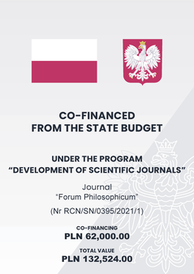- Home »
- Issues »
- 22/1 - Spring 2017 »
- Articles »
The Conscious Brain
Some Views, Concepts and Remarks from a Neurobiological Perspective
Abstract
The goal of this article is to review some aspects of brain anatomy and neurophysiology that are important for consciousness, and which hopefully may be of benefit to philosophers investigating the conscious mind. Taking as an initial point of reference the distinction between “the hard problem” and “the weak problems” of consciousness, we shall concentrate on questions pertaining to the second of these. A putative “consciousness system” in the brain will be presented, paying special attention to diffuse projection systems. The “center of gravity” will be brain connectivity, since consciousness must, critically, be dependent on coherent activity and timing. “Detectors” of synchronicity and coincidence, like NMDA receptors, also necessarily play a role here. To be conscious, we do not need an entire brain. While even large hemispherectomies need not unequivocally affect consciousness, far smaller brain-stem lesions may be devastating in this regard. Even so, the recent discovery by Matthew F. Glasser et al. of 180 separate areas in the human brain cortex is intriguing from a teleological perspective, as it is quite unthinkable that any of them could be “redundant.
Keywords
- consciousness
- cognition
- brain anatomy
- diffuse projecting systems (of brain)
- connectivity
- neural event
- NMDA
- synchronicity
Cite this article
Adamek, Dariusz and Józef Bremer. “The Conscious Brain: Some Views, Concepts, and Remarks from a Neurobiological Perspective.” Forum Philosophicum 22, no. 1 (2017): 5–29. doi:10.5840/forphil20172211.
Bibliography
Adamek, Dariusz and Barbara Tomik. Stwardnienie boczne zanikowe. Kraków: ZOZ Ośrodek UMEA Shinoda-Kuracejo, 2005. Adamek, Dariusz, Stanisław Żulichowski and Józef Kałuża. “Long Survival with Cerebellar Aplasia and Degenerative Changes of CNS: A Case Report.” Neuropatologia Polska 24, no. 1 (1986): 89–100. Bayne, Tim. “The Unity of Consciousness and the Split-Brain Syndrome.” The Journal of Philosophy 105, no. 6 (2008): 277–300. doi:10.5840/jphil2008105638. Blackmon, James. “Hemispherectomies and Independently Conscious Brain Regions.” Journal of Cognition and Neuroethics 3, no. 4 (2016): 1–26. http://jcn.cognethic.org/jcnv3i4_Blackmon.pdf. Blumenfeld, Hal. Neuroanatomy through Clinical Cases. Second edition. Oxford: Oxford University Press, 2010. Bremer, Józef. Jak to jest być świadomym. Analityczne teorie umysłu a problem neuronalnych podstaw świadomości. Warsaw: IFiS PAN, 2005. Chalmers, David J. “Facing Up to the Problem of Consciousness.” Journal of Consciousness Studies 2, no. 3 (1995): 200–19. doi:10.1093/acprof:oso/9780195311105.003.0001. Republished by author at http://consc.net/papers/facing.html. Dehaene, Stanislas. Consciousness and the Brain: Deciphering How the Brain Codes Our Thoughts. New York: Viking, 2014. Gazzaniga, Michael S., Richard B. Ivry, and George R. Mangun. Cognitive Neuroscience: The Biology of the Mind. Fourth edition. New York: W. W. Norton, 2014. Glasser, Matthew F., Timothy S. Coalson, Emma C. Robinson et al. “A Multi-modal Parcellation of Human Cerebral Cortex.” Nature 536, no. 7615 (2016): 171–8. doi:10.1038/nature18933. Grossberg, Stephen. “Towards Solving the Hard Problem of Consciousness: The Varieties of Brain Resonances and the Conscious Experiences That They Support.” Neural Networks 87 (2017): 38–95. doi:10.1016/j.neunet.2016.11.003. Hirstein, William. “Conscious States: Where Are They in the Brain and What Are Their Necessary Ingredients?” Mens Sana Monographs 11, no. 1 (2013): 230–38. doi:10.4103/0973-1229.109343. Kanno, Tetsuo, Isao Morita, Sachiko Yamaguchi et al. “Dorsal Column Stimulation in Persistent Vegetative State.” Neuromodulation 12, no. 1 (2009): 33–8. doi:10.1111/j.1525-1403.2009.00185.x. Laureys, Steven, Melanie Boly, Gustave Moonen, and Pierre Maquet. “Coma.” In Encyclopedia of Neurosciences, edited by Larry R. Squire, 2:1133–42. Oxford: Academic Press, 2009. doi:10.1016/B978-008045046-9.01770-8. Mould, Richard A. “A Solution to the Binding Problem.” Journal of Behavioral and Brain Science 6, no. 3 (2016): 113–7. doi:10.4236/jbbs.2016.63013. Nagel, Thomas. “Brain Bisection and the Unity of Consciousness.” Synthèse 22 (1971): 396–413. doi:10.1007/bf00413435. Park, John. “Tumor Resection from Eloquent Brain Areas.” NEUROtransmitter magazine (Santa Barbara Neuroscience Institute), Spring 2015), 6–7. https://www.cottagehealth.org/app/files/public/1099/neurotransmitter_park02_spring15.pdf. Parker, Rolland S. Traumatic Brain Injury and Neuropsychological Impairment: Sensorimotor, Cognitive, Emotional, and Adaptive Problems of Children and Adults. New York: Springer, 1990. doi:10.1007/978-1-4612-3398-5. Peters, Alan. “The Effects of Normal Aging on Myelinated Nerve Fibers in Monkey Central Nervous System.” Frontiers in Neuroanatomy 3 (July 2009), article 11. doi:10.3389/neuro.05.011.2009. Peters, Alan and Thomas Kemper, “A Review of the Structural Alterations in the Cerebral Hemispheres of the Aging Rhesus Monkey,” Neurobiology of Aging 33, no. 10 (2012): 2357–72. doi:10.1016/j.neurobiolaging.2011.11.015. Rasmussen, Theodore, Jerzy Olszewski and Donald Lloyd-Smith. “Focal Seizures Due to Chronic Localized Encephalitis.” Neurology 8, no. 6 (1958): 435–45. doi:10.1212/WNL.8.6.435. Sperry, Roger W. “Hemisphere Deconnection and Unity in Consciousness.” American Psychologist 23 (1968): 723–33. doi:10.1037/h0026839. Zamora-López, Gorka, Yuhan Chen, Gustavo Deco, Morten L. Kringelbach, and Changsong Zhou. “Functional Complexity Emerging from Anatomical Constraints in the Brain: The Significance of Network Modularity and Rich-clubs.” Scientific Reports 6 (2016), article 38424. doi:10.1038/srep38424.





